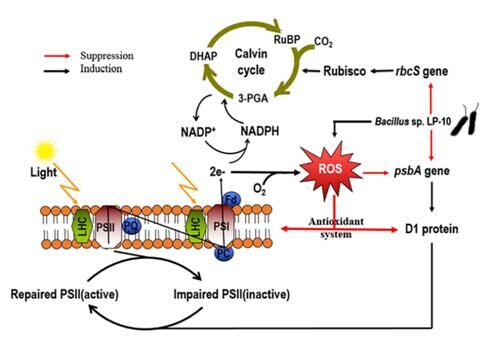作 者:Guan, C.W., Guo, X.Y., Li, Y., Zhang, H.J., Lei,X.Q., Cai, G.J., Guo, J.J., Yu, Z.M., andZheng, T.L. 影响因子:5.295
刊物名称:Scientific Reports
出版年份:2015
卷:5
Harmful algal blooms caused byPhaeocystis globosahave resulted in staggering losses to coastal countries because of their world-wide distribution. Bacteria have been studied for years to control the blooms of harmful alga, however, the action mechanism of them against harmful algal cells is still not well defined. Here, a previously isolated algicidal bacteriumBacillus sp.LP-10was used to elucidate the potential mechanism involved in the dysfunction ofP. globosaalgal cells at physiological and molecular levels. Our results showedBacillus sp.LP-10induced an obvious rise of reactive oxygen species (ROS), which was supposed to be major reason for algal cell death. Meanwhile, the results revealed a significant decrease of photosynthetic physiological indexes and apparent down-regulated of photosynthesis-related genes (psbAandrbcS) and protein (PSII reaction center protein D1), after treated byBacillus sp.LP-10filtrates, suggesting photoinhibition occurred in the algal cells. Furthermore, our results indicated that light played important roles in the algal cell death. Our work demonstrated that the major lethal reason ofP. globosacells treated by the algicidal bacterium was the photoinhibition resulted from oxidative stress induced byBacillus sp.LP-10.

Fig.7. A hypothetical scheme for the algicidal mechanism of the algal cells
uponBacillus sp.LP-10.

